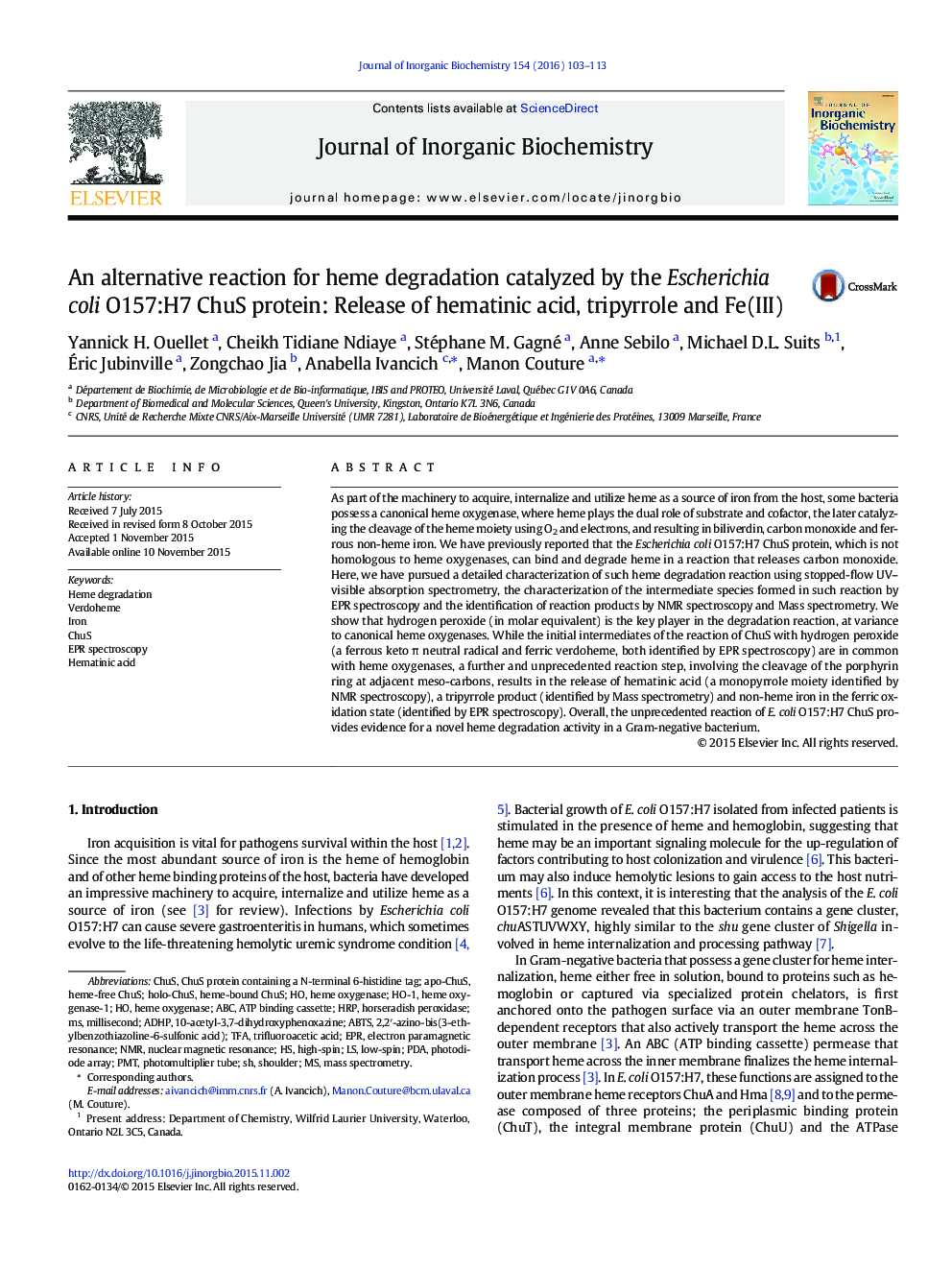| Article ID | Journal | Published Year | Pages | File Type |
|---|---|---|---|---|
| 1316494 | Journal of Inorganic Biochemistry | 2016 | 11 Pages |
•An alternative mechanism for heme degradation is reported for ChuS.•Heme degradation by E. coli O157:H7 ChuS is triggered by H2O2 in aerobic conditions.•Initial steps of the reaction of ChuS are in common with heme oxygenases.•Heme cleavage steps differ from heme oxygenases and IsdG/MhuD family of proteins.•Identified reaction products: tripyrrole, hematinic acid, CO and non-heme Fe(III).
As part of the machinery to acquire, internalize and utilize heme as a source of iron from the host, some bacteria possess a canonical heme oxygenase, where heme plays the dual role of substrate and cofactor, the later catalyzing the cleavage of the heme moiety using O2 and electrons, and resulting in biliverdin, carbon monoxide and ferrous non-heme iron. We have previously reported that the Escherichia coli O157:H7 ChuS protein, which is not homologous to heme oxygenases, can bind and degrade heme in a reaction that releases carbon monoxide. Here, we have pursued a detailed characterization of such heme degradation reaction using stopped-flow UV–visible absorption spectrometry, the characterization of the intermediate species formed in such reaction by EPR spectroscopy and the identification of reaction products by NMR spectroscopy and Mass spectrometry. We show that hydrogen peroxide (in molar equivalent) is the key player in the degradation reaction, at variance to canonical heme oxygenases. While the initial intermediates of the reaction of ChuS with hydrogen peroxide (a ferrous keto π neutral radical and ferric verdoheme, both identified by EPR spectroscopy) are in common with heme oxygenases, a further and unprecedented reaction step, involving the cleavage of the porphyrin ring at adjacent meso-carbons, results in the release of hematinic acid (a monopyrrole moiety identified by NMR spectroscopy), a tripyrrole product (identified by Mass spectrometry) and non-heme iron in the ferric oxidation state (identified by EPR spectroscopy). Overall, the unprecedented reaction of E. coli O157:H7 ChuS provides evidence for a novel heme degradation activity in a Gram-negative bacterium.
Graphical abstractReaction of the heme-bound ChuS protein from E. coli O157:H7 with hydrogen peroxide leads to the cleavage of the porphyrin and the release of ferric iron.Figure optionsDownload full-size imageDownload as PowerPoint slide
